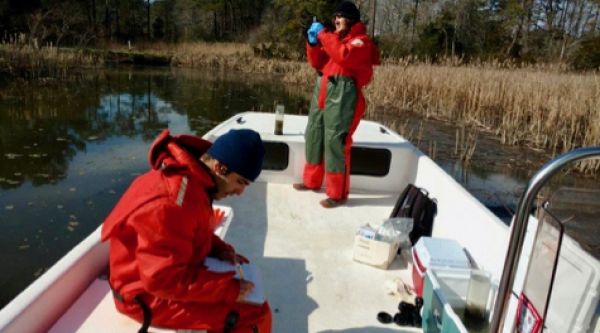Excess nitrogen is a major threat to water quality in coastal waters worldwide. Found in treated wastewater, farm and lawn fertilizers and combustion exhaust, it fuels blooms of algae that shade submerged grasses and suck oxygen from the water when they die and decay.
A new study by researchers at William & Mary’s Virginia Institute of Marine Science provides additional evidence that wastewater from a poultry processing plant has a particularly significant impact on water quality and nutrient cycling. That’s because it contains not only lots of nitrogen, but antibiotics and byproducts of the process the plants use to treat their wastewater. These byproducts are thought to inhibit the growth and activity of microbes that would otherwise help remove nitrogen from tidal creeks before it can enter coastal systems.
The researchers, VIMS Ph.D. student Miguel Semedo and Professor Bongkeun Song, say their study is the first to evaluate poultry-industry impacts on water quality and nutrient cycling using genetic, microbial and remote-sensing techniques. Results of their work appear in the January issue of Environmental Science & Technology. The study was supported through the Fulbright Program and Semedo’s graduate fellowship from Virginia Sea Grant.
Continue reading at William & Mary
Image via William & Mary


